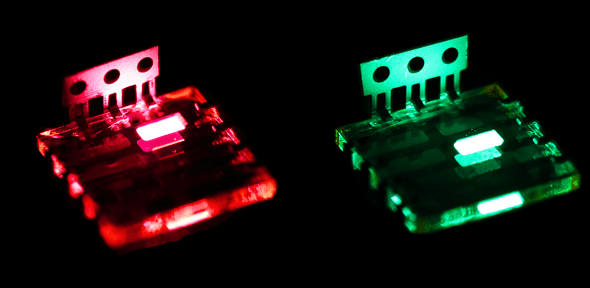
Imagine walking down a city street lit not by neon signs or LED bulbs but by glowing trees. That sci-fi vision just got closer to reality thanks to a team of scientists in China who figured out how to make succulents shine in vivid shades of green, blue, and red. The plants shine as bright as a night light and recharge using sunlight.
The researchers, led by bioengineer Shuting Liu at South China Agricultural University, claim that unlike earlier glowing plants that required genetic tinkering or fragile bioluminescent enzymes, these new creations rely on something much simpler: glow-in-the-dark particles similar to the phosphors in children’s toys.
“Picture the world of Avatar, where glowing plants light up an entire ecosystem,” Liu said. “We wanted to make that vision possible using materials we already work with in the lab. Imagine glowing trees replacing streetlights.”
How Succulents Became Glow Lamps
Past attempts at glowing greenery came with limits. Genetic engineering could only coax plants into faint green glows, while material-based approaches struggled with brightness. But Liu’s group made a crucial breakthrough by looking at particle size.
They injected succulent leaves with light-storing phosphor particles about 7 micrometers wide — roughly the width of a red blood cell. Smaller nanoparticles slipped through plant tissues but gave off weak light. Larger particles glowed brighter but got stuck. These “just right” microparticles diffused through succulent leaves within seconds, lighting them from the inside out.

To the team’s surprise, succulents turned out to be better candidates than thinner-leafed plants like bok choy or pothos. “Succulents exhibit higher loading capacity and more uniform luminescence,” the study reported. Their dense internal structure acted like a natural scaffold, distributing the particles evenly instead of letting them clump.
After a brief “charge” in sunlight or indoor LEDs, the succulents glowed for up to two hours. Green particles produced the strongest glow, rivaling the brightness of a small night lamp.
Beyond the Glow: Toward Plant-Based Lighting

The team didn’t stop with one color. By swapping in different phosphors, they made succulents radiate blue, red, cyan, or even warm-white light. In one experiment, they built a wall of 56 glowing succulents, bright enough to read a book beside.
They also tested long-term safety. Over ten days, the modified succulents kept glowing without wilting. Chlorophyll, sugar, and protein levels stayed normal, suggesting the plants weren’t stressed by their new abilities. Still, Liu says more “rigorous, long-term biosafety evaluations” are needed before glowing gardens can go mainstream.
The practical promise is clear as day. Each plant takes about 10 minutes to prepare and costs a little over 10 yuan (around $1.40), making the method far cheaper than genetic engineering. “The process is straightforward and cost-effective and achieves luminescence within 10 minutes, paving the way for practical applications in plant-based lighting,” the authors wrote.
And while the sight of rainbow succulents glowing like neon signs is striking, Liu has her eye on more subtle designs. “I also really like the cyan and red glows because they’re so novel; it’s striking to see a living plant emit multiple colors,” she told Gizmodo. “Those hues also make me imagine a future warm-white glowing plant — visually comfortable and potentially more practical for ambient lighting.”
For now, glowing succulents are proof of concept. But if the research keeps advancing, tomorrow’s city lights may sprout from the ground instead of hanging from a pole.
The findings were reported in the journal Matter this week.





